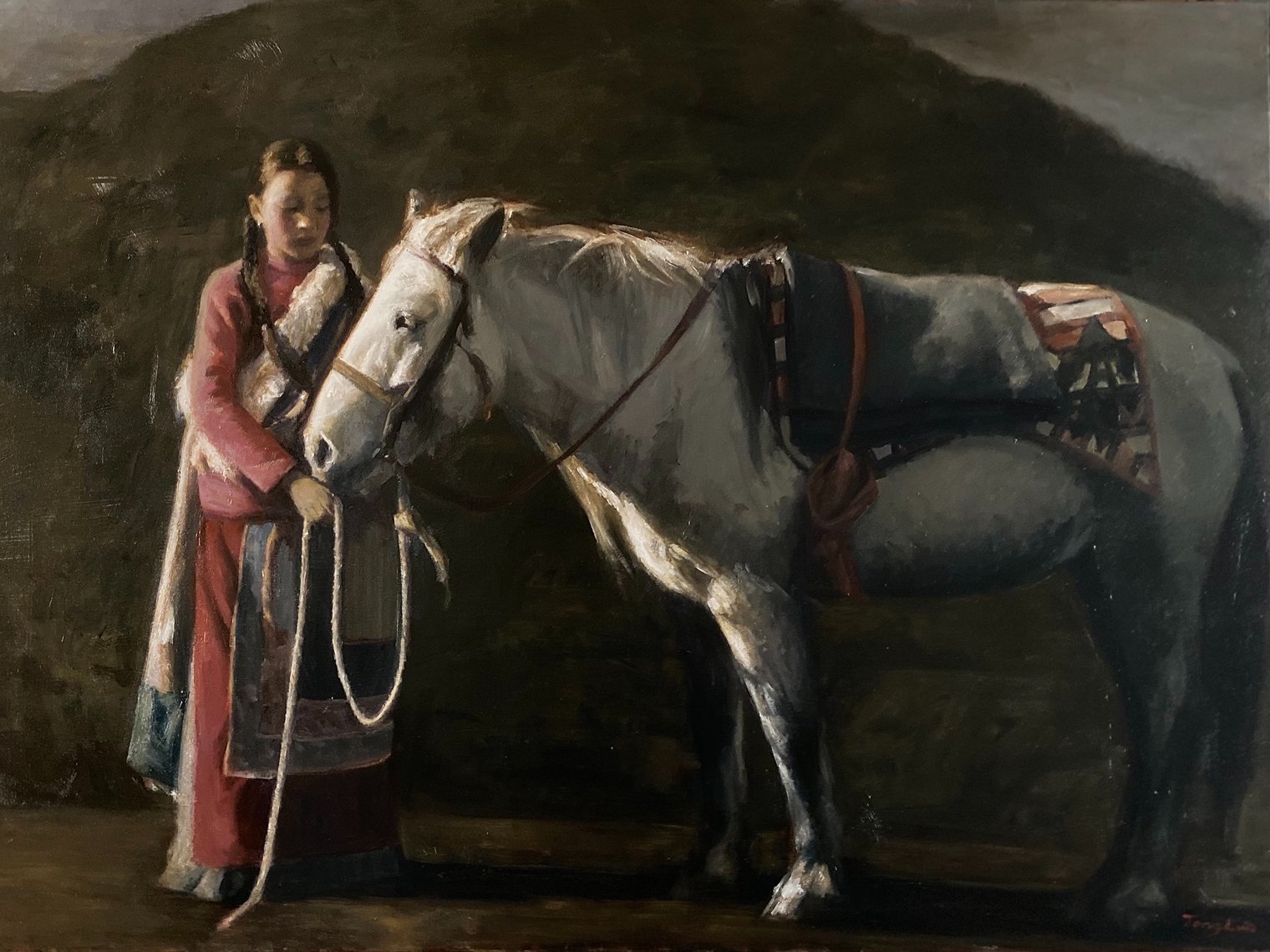TONG LUO
If I tell you my dream, you might forget it. If I act on my dream, perhaps you will remember it, but if I involve you, it becomes your dream too. (Tibetan Proverb) Chinese painter Luo Tong went one better: he painted his dream for all to see. The dream he dreamt and lovingly transferred to canvas after canvas, is a dream of a faraway land and people, places he knows, people he misses.
Born in Huai Yang County of Henan in 1969, he was introduced to art early on - his father taught traditional Chinese painting, and Luo, following in his footsteps enrolled in the Oil Painting Department of the Guanzhou Academy of Fine Arts. He graduated with a Master's Degree, and remained at the academy as a teacher. Luo's talent did not go unnoticed, and he was one of only ten best oil painters selected from across China in 1999 to be allowed to pursue post-graduate studies in Fine Art at the Central Academy of Fine Art in Beijing. After a few years of teaching at Guanzhou, he immigrated to Canada, settling in Calgary, only to move again, this time to New York, where he now lives and works.
Luo draws his inspiration, both artistic and spiritual, from the land and people of Tibet. He travels there every year, immersing himself in their culture and daily rituals, soaking in the exotic landscape and atmosphere. His paintings are imbued with a profound emotional component, as the artist attempts to convey on canvas the beauty and sensations of his encounters.
Compassion and sensitivity are at the root of his work, mastery of the craft and attention to detail, itsforte. It is not just the love of the kind of light he finds only in Tibet, but the chiselled features of its inhabitants, their costumes and demeanour that draw him there. “I constantly pursue the essence of the Western and Oriental artistic path. Through the unique image and the subject that I select, the variation of texture and colours, I strive to create a spiritual nourishment, so as to stimulate and sharpen the artistic intuition among us.”
Words aside, Luo's paintings speak for themselves, and theirs is a symphony of light and shadow, of quiet compositions infused with mystery, of faces so serene as to be unreal. Perhaps posed, perhaps not, the people he paints stare quietly at the viewer, suspended in time and motion, while some look away as if lost in a reverie. At the same time, even though quietly resistant to scrutiny, they seem to open up with an unbearable innocence and trust. Against a dark background, they are lit by a hidden source of light that accentuates their features, drawing a kind of halo around the figure. Luo uses colour sparingly, focusing his brush on the delicate fur collars and cuffs, the fine beaded braids of the young girl, or on the swirling, billowing clouds on the faraway horizon.
His emotional attachment to his subject matter is impossible to ignore and is the heart of his oeuvre. Many of the paintings feature the same young girl and bring to mind The Helga Pictures, a series of more that 240 paintings and drawings of a German model done by American painter Andrew Wyeth (1917-2009). He painted her for over fifteen years, creating a unique and compelling body of work. The girl in Luo's paintings has no name. She is Morning Light and Nobleman's Daughter, she heads Into the wild with a wooden pail, and she is the Nomad Girl poised beside her saddled white horse. And as we leave the gallery, she follows us with her gaze, standing against a snowy landscape in Unexpected Storm, her hands hidden in the long sleeves of her leather coat trimmed with fur and lined in red. She is Tibet. She is the artist's soul and his dream. And we are indeed lucky to be privy to this inner sanctum made visible.
A short video made by HMC, talking with Tong Luo about his newest series in progress














